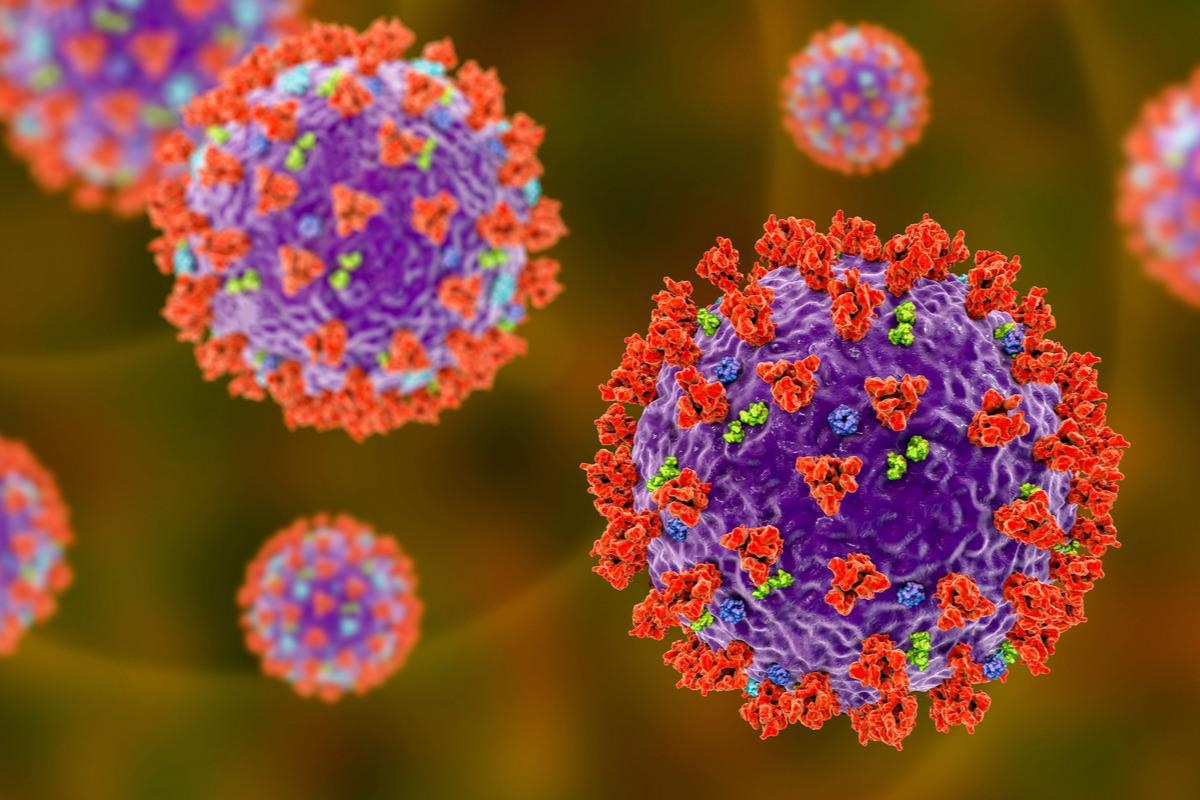In a recent study posted to the bioRxiv* preprint server, researchers demonstrated the anti-spike (S) antibody (Ab) response to natural severe acute respiratory syndrome coronavirus 2 (SARS-CoV-2) infection. They further estimated the acute SARS-CoV-2 infection-induced Ab activity against recently emerged variants like Omicron.

The SARS-CoV-2 outbreak had a significant impact on public health worldwide. To date, coronavirus disease 2019 (COVID-19) has caused over 448 million infections and six million deaths globally. The SARS-CoV-2 is an enveloped β-CoV with large trimeric S protein protrusions. The protection against SARS-CoV-2 is primarily dependent on S-specific Ab responses. Further, understanding the immune response towards SARS-CoV-2 is becoming increasingly important as the virus persistently spreads and causes outbreaks throughout the world.
About the study
In the current study, the scientists investigated the angiotensin-converting enzyme 2 (ACE2)-blocking and S-binding Ab responses during COVID-19 at various time stamps. They focused on the longevity, function, and magnitude of the anti-S Ab response to acute SARS-CoV-2 infection. The effect of emerging SARS-CoV-2 variants on the anti-S Abs evoked by acute infections in adults was also evaluated.
The study was conducted in the Chang Gung Memorial Hospital, Taoyuan, Taiwan. People who were SARS-CoV-2-positive based on the reverse transcriptase-polymerase chain reaction (RT-PCR) examination of oropharyngeal swab samples were recruited for the study during January and September 2020. Before enrollment, written informed consent was procured from all subjects.
The COVID-19 patients were admitted to negative-pressure isolation rooms as per the Taiwan Centers for Disease Control's regulations. Blood samples were collected from the participants, and before testing, the serum samples were kept at -20°C.
Nucleic acid extraction of oropharyngeal swab samples was conducted employing the Labturbo kit. The S-binding and receptor-binding domain (RBD)-ACE2 blocking activity of the serum samples was determined using flow cytometry-based assays. The serum samples' RBD-binding activity was estimated using a hemagglutination inhibition (HI) assay. The pseudovirus neutralization assay was conducted using HEK293T cells. Further, memory B cell responses were evaluated in peripheral blood mononuclear cells (PBMCs) using the enzyme-linked immune absorbent spot (ELISpot) assay.
Results and discussions
The results indicate that the anti-SARS-CoV-2 S Ab levels peaked during the initial week following COVID-19 symptom onset. The anti-S Abs continued to elevate during the second and third weeks of the SARS-CoV-2 infection. It plateaued after three weeks of symptom onset, i.e., during the recuperation phase, similar to prior reports.
The RBD-binding Ab response was detected concurrently with S-binding Abs, with its functional activities assessed via the ACE2-blocking and HI analyses. This observation suggested that the anti-RBD Abs found after acute SARS-CoV-2 wild-type (WT) infection probably had neutralizing capabilities.
Even after three weeks following COVID-19 onset, S-specific memory B cell responses remained detectable. The memory B cell responses were substantially associated with peak ACE2-blocking and S-binding serological responses. This inference suggests that the development of B cell response was critical for immunity against the SARS-CoV-2 infection.
SARS-CoV-2 patients with fever exhibited considerably higher S-specific immunoglobulin M (IgM) B cell responses, HI titers, and RBD-binding Ab responses than the non-fever patients. Further, COVID-19 patients with pneumonia had dramatically robust B-cell and anti-S Ab responses relative to those without pneumonia.
Nonetheless, the S-binding Ab magnitude was over two-time reduced at about 11 months following COVID-19 compared to that in the convalescent phase of infection. Notably, the convalescent sera samples had more than 80-time reduced neutralization capacity against the SARS-CoV-2 Omicron variant.
In addition, follow-up sera samples exhibited over 160-time lower neutralization capacity against Omicron. These observations indicate that COVID-19 vaccination-induced passive re-immunization might be beneficial to enhance anti-S Ab levels in convalescent SARS-CoV-2 patients.
Conclusion
The study findings showed that the acute infection of SARS-CoV-2 induces quick and robust ACE2-blocking and S-binding Ab responses. However, the Ab responses waned off around 11 months following COVID-19. The serological responses were associated with the frequency of natural infection-induced S-specific memory B cell responses.
In addition, the levels of ACE2-blocking, S-binding, and memory B cell responses were substantially higher in SARS-CoV-2 patients who experienced pneumonia and fever.
Nevertheless, the S mutations in the SARS-CoV-2 variants such as Omicron and Beta significantly impacted the natural infection-induced S-specific Ab responses. The study underscores the need for sustaining functional anti-S Abs via vaccination and suggests continuous monitoring of S-specific Ab responses induced by natural SARS-CoV-2 infections.
*Important notice
bioRxiv publishes preliminary scientific reports that are not peer-reviewed and, therefore, should not be regarded as conclusive, guide clinical practice/health-related behavior, or treated as established information.









 Add Category
Add Category

